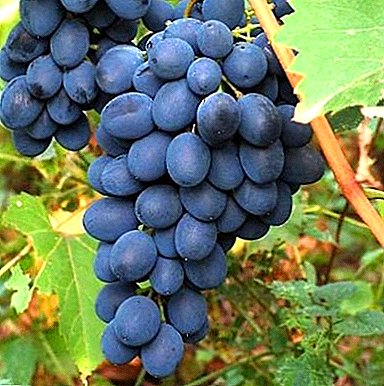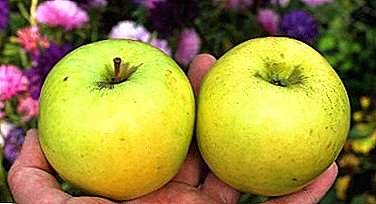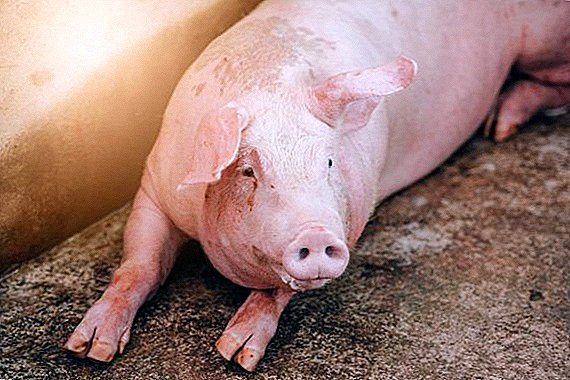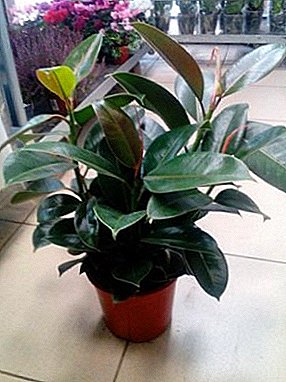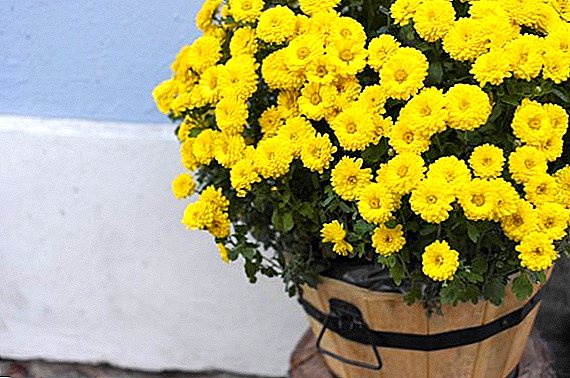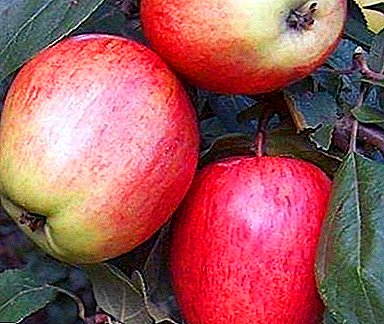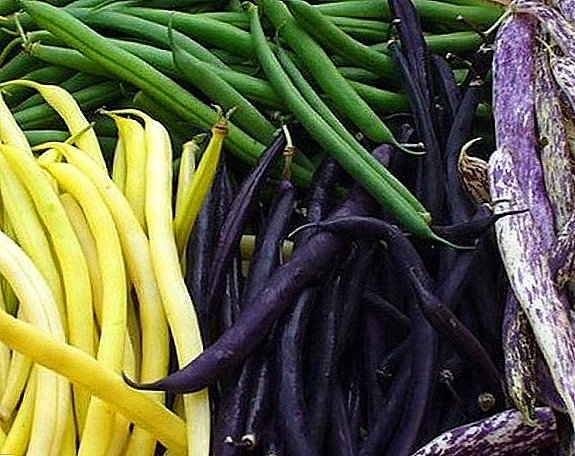 Beans have always been considered a low-calorie and easily digestible product, which is an excellent source of energy, and this is true for many varieties (this is indicated in their description). However, this was not always the case, and in the initial stages of culture cultivation, the plant was used as a decorative ornament.
Beans have always been considered a low-calorie and easily digestible product, which is an excellent source of energy, and this is true for many varieties (this is indicated in their description). However, this was not always the case, and in the initial stages of culture cultivation, the plant was used as a decorative ornament.
In this article we will talk about varieties of green beans, allowing you to eat not only the beans themselves, but whole pods. It is noteworthy that the main and most noticeable criterion for dividing varieties into groups is the color of the pods.
The best varieties of red beans
 Red beans are almost as popular as white beans. This is not surprising, because they contain a large amount of proteins (8 g per 100 g) and antioxidants. Thanks to such indicators, red beans outperform even currants in beneficial properties, because it is antioxidants that protect the human body from harmful radionuclides and slow down the aging process. In addition, the red look contains a lot of vitamins and fiber, the use of which improves skin condition and has a beneficial effect on the immune and nervous systems.
Red beans are almost as popular as white beans. This is not surprising, because they contain a large amount of proteins (8 g per 100 g) and antioxidants. Thanks to such indicators, red beans outperform even currants in beneficial properties, because it is antioxidants that protect the human body from harmful radionuclides and slow down the aging process. In addition, the red look contains a lot of vitamins and fiber, the use of which improves skin condition and has a beneficial effect on the immune and nervous systems.
Important! Only 100 grams of beans per day will provide you with the necessary amount of these substances, which not only stabilizes blood sugar, but also protects against intestinal infections and even tumors.Of course, the beans are no wonder considered one of the most useful crops grown in suburban areas. However, in the case of red beans should be very careful, because in their raw form they are toxic. Heat treatment will help to destroy toxins, only cooking should last at least 10 minutes. If necessary, the beans can be pre-soaked in water.
There are different types of red beans. So, a similar shade can have both common and Asian beans, as well as braiding or bush plants with red seeds. This color is also typical for seeds of the decorative form of beans.
The best representative of red shelling varieties in our country are Skorospelka, Tomato, Tashkent, Middle Red, Ethiopian and Adzuki. Like different varieties of beans, they all have their own specific set of features and may differ in appearance and growth characteristics. For example, Harrowing beans fully ripen in 55-60 days after planting, and their characteristic features are a long and neat shape, as well as a pleasant pink-red color.  Tomato - ideal for preserving and cooking traditional Georgian dishes. The fruits of this variety are oblong, brown in color and slightly flattened on the sides. Tashkent is more suitable for cultivation in the southern regions of the country, as it prefers a warm climate. However, using the breeding method of breeding, you can get quite good yields in the middle zone of the country.
Tomato - ideal for preserving and cooking traditional Georgian dishes. The fruits of this variety are oblong, brown in color and slightly flattened on the sides. Tashkent is more suitable for cultivation in the southern regions of the country, as it prefers a warm climate. However, using the breeding method of breeding, you can get quite good yields in the middle zone of the country.
We will not detail all the features of the red bean varieties now, but when buying seeds, always pay attention to this, because the beans, ideal for growing in some conditions, are absolutely not suitable for others.
Yellow beans
Among the most varied varieties of young beans, which are usually presented in the garden, yellow stringed stands out especially. Its large pods with a bright color are very similar to ordinary wax, although regardless of their name, among the representatives of yellow beans are still purple pods.
Yellow beans are used to prepare various dishes (soups, stews, salads) and are well suited for blanching, boiling, roasting, marinating, stewing or steaming. However, it is often used in food and raw, because this is how it retains the maximum number of useful properties.  The best variety of yellow beans is Sweet courage, which provides a bountiful harvest in 41-56 days after germination. A distinctive feature of this forty centimeter-sized plant are cylindrical, juicy beans with bright yellow color. The length of the pod is 12-16 cm.
The best variety of yellow beans is Sweet courage, which provides a bountiful harvest in 41-56 days after germination. A distinctive feature of this forty centimeter-sized plant are cylindrical, juicy beans with bright yellow color. The length of the pod is 12-16 cm.
Did you know? As a vegetable culture, beans were grown only in the XVIII century.
White beans: varieties
White beans, above all, are characterized by not too much protein (per 100 g - 7 g), so this bean is ideal for people suffering from excess weight. The use of white beans will be useful for older people, because, among other things, it contains a lot of iron, which helps strengthen the cardiovascular system and improve overall health.
When cooking, the most optimal combination of white beans with vegetables, containing a large amount of vitamin C.  Like other "color" varieties, a group of white beans combines several varieties of beans, among which are isolated shrub, climbing or weaving plants. Practically all of them are grown according to the same technology, and the yield largely depends on the selected variety and attention during the summer season. Among the most popular varieties of white beans, Black Eye is distinguished - it is distinguished by small fruits and thin skin, thanks to which you do not need much time to prepare this beans (you can do without soaking).
Like other "color" varieties, a group of white beans combines several varieties of beans, among which are isolated shrub, climbing or weaving plants. Practically all of them are grown according to the same technology, and the yield largely depends on the selected variety and attention during the summer season. Among the most popular varieties of white beans, Black Eye is distinguished - it is distinguished by small fruits and thin skin, thanks to which you do not need much time to prepare this beans (you can do without soaking).
Did you know? The variety got its name because of a small black dot located on a white background of a bean..Chali - unlike the previous one, this variety boasts relatively large seeds, which are most often used in the preparation of main dishes. The reason for this is the very dense structure of the bean, which makes it possible to first boil and then fry the beans.
Nevi is a pea species valued by gardeners for its high content of fiber and iron, which have a beneficial effect on the human body.
Among other representatives of white beans, there are also white flat varieties, Belozerka and White mares, which, although often grown in summer cottages, have not yet received such wide popularity as described above.
Description of green bean varieties
 Speaking of green beans, it is impossible not to mention the green beans, represented by some of the best varieties. This representative of the legume family has pods reaching 6–20 cm in length, in each of which 3 to 8 seeds ripen. It is noteworthy that the first mention of green beans, scientists have found in Chinese letters relating to the II millennium BC. All subsequent material artifacts were found in South America, where green beans were grown by the Inca and Aztec tribes.
Speaking of green beans, it is impossible not to mention the green beans, represented by some of the best varieties. This representative of the legume family has pods reaching 6–20 cm in length, in each of which 3 to 8 seeds ripen. It is noteworthy that the first mention of green beans, scientists have found in Chinese letters relating to the II millennium BC. All subsequent material artifacts were found in South America, where green beans were grown by the Inca and Aztec tribes.
As for the culinary tradition of European countries, here the tradition of using juicy beans blades appeared not earlier than the XVIII century. Delicate and crispy weekly pods are eaten whole, without removing only the seeds that have formed. They can have a wide variety of forms: from standard round (asparagus, "French" or Kenyan beans) to flat and short (7-13 cm).
Important! The differences of green beans are noticeable in its color palette. There are bright green, grayish green, green with purple spots and even yellow pods, but the most common color is still green.The best varieties of this type include asparagus and colored beans. In the first case, these are rounded shoulder blades that do not have coarse fibers (Tendergreen is considered one of the best), and in the second, pods with yellow and cream seeds that retain their color during cooking (it is worth trying the fragrant Kinghorn Wax). In addition, green beans often include flat beans, which quickly become tough if you miss the time they are harvested. The best varieties among these plants are considered Prince and Hunter.
Purple beans
 Purple beans are represented by yellow-purple pods, reaching a length of 12 cm. Often this species is called "Georgian" or "dragon tongue", but all three names refer to leguminous plants with olive seeds inside a purple pod.
Purple beans are represented by yellow-purple pods, reaching a length of 12 cm. Often this species is called "Georgian" or "dragon tongue", but all three names refer to leguminous plants with olive seeds inside a purple pod.
Beans are usable both in boiled and raw, but in the latter case it is better to use young specimens. If the fruits are overripe, then their nucleoli are removed from the pod and cooked separately.
An important feature of purple beans is a change in color during heat treatment. That is, if you decide to cook the pods, they will lose a beautiful purple color and acquire a standard green color. This amazing type of beans came to us from India and China, where in cooking both whole young pods and ripened seeds without cusps are used.
Black Beans: Popular Varieties
Among the varieties of beans, often found in summer cottages, representatives of black beans, which, although less often than white and red, are considered to be good cultivars for cultivation, are no less useful. They contain more protein than the same red and white beans (up to 9 g), which means that if necessary, the fruits of such a plant can be easily replaced with meat, especially considering the fact that the characteristics of black bean proteins are really close to the animal protein .
 In addition to the above advantages, the normalization of the chemical balance in the stomach, which is typical with the regular use of such beans, should also be attributed to the advantages of black seeds.
In addition to the above advantages, the normalization of the chemical balance in the stomach, which is typical with the regular use of such beans, should also be attributed to the advantages of black seeds.
Given that domestic gardeners are not very actively undertook the cultivation of black beans, then the varieties of this plant is not so much. The best of them are:
- Kidney beans are kidney shaped and colored black with a reddish tinge. As in the case of purple beans, the color of black beans also changes when cooked, after which they turn pink. After cooking, the skin of black bean seeds becomes very thin.
- Preto - bean variety with fruits of rich black color with a characteristic white scar, with cream beans inside. The main characteristic feature of this variety is a light berry aroma, especially noticeable when cooking beans. As for heat treatment, Preto beans have to be cooked for a very long time (at least 90 minutes), soaking in water beforehand. The taste of this black bean is also quite specific and has a sweetish note, with a barely perceptible bitterness.
Did you know? Most often, you can see black beans in Mexican dishes, delicate green - in French, and red - great for filling burritos or as a component of spicy chili. At the same time, white beans are a versatile product, perfectly combined with other products of any color, shading them in the most amazing way.Whatever type you choose for planting at your summer cottage, in any case, you will receive a unique supplement for different dishes, containing a lot of useful vitamins and trace elements.



